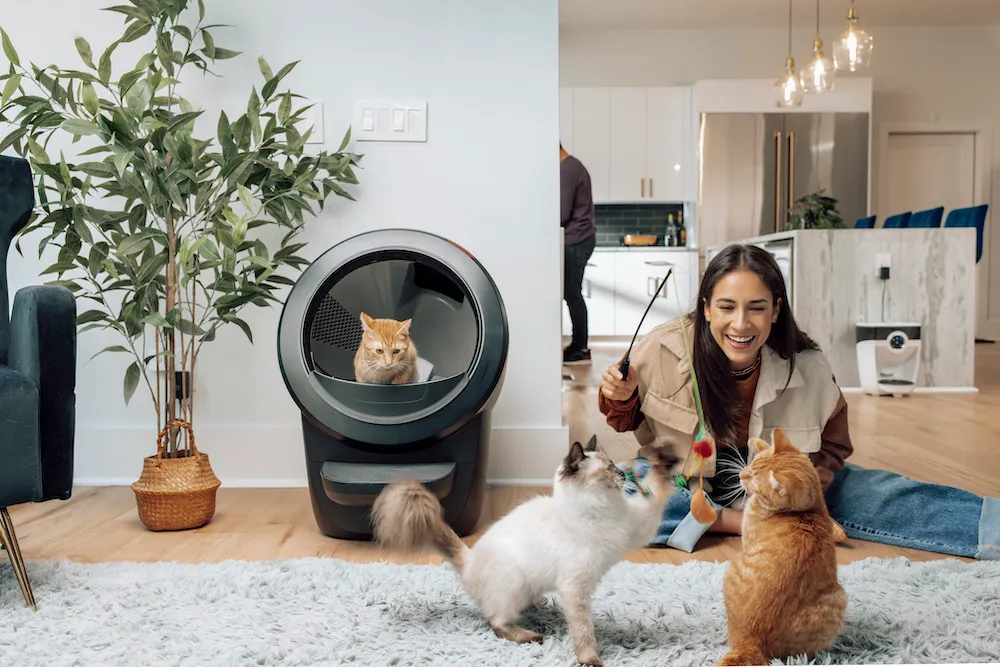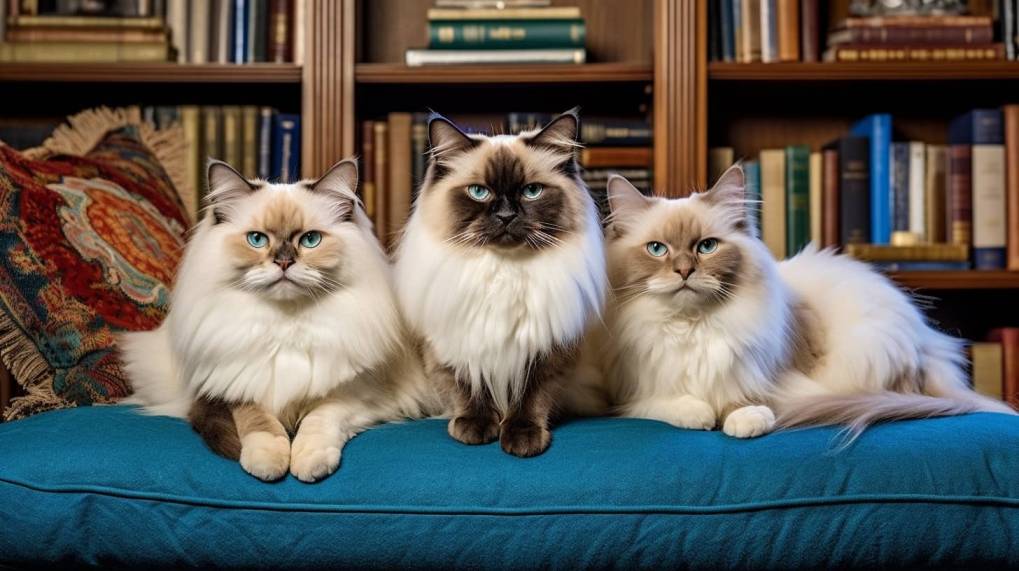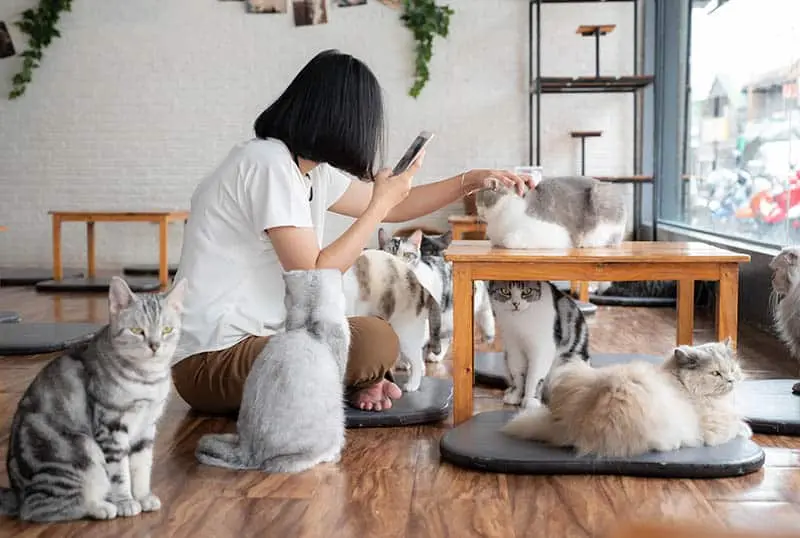Two or three times as much joy—and frequently twice or three times the responsibility—come from multi-cat households. Keeping your furious cat family in peace doesn't have to be difficult, though; with the correct advice and skills, you'll become a master at leading your meowing group!
Benefits Of Multi Cat Living
The benefits of having numerous cats include warm cuddles, playful pounces, and relaxing purrs. These feline buddies offer mutual support and companionship in addition to you. When combined, they can help reduce tension and loneliness while creating a calm environment in your home.
Seeing your cats interact can provide hours of amusement in addition to emotional support! Their entertaining playfights and cutesy antics prevent boredom. Navigating the world of several cat households is not without its difficulties, though. It takes patience and strategy to deal with different personalities and preferences. But the benefits are definitely worthwhile with a few tweaks and some know-how!
Understanding Feline Social Dynamics

You've undoubtedly noticed that cats have their own set of social norms and rules if you've ever observed them interacting. They are fiercely protective animals that frequently have a hierarchy headed by larger or more domineering cats. Maintaining a multi-cat home successfully requires an understanding of this.
Meowing and purring are not the only ways that cats communicate; they also have another unique technique. Understanding how to read such tiny indications can help you get insight into your cat's environment, as body language plays a big part in feline relationships.
Every cat is unique, just like every human being—they might be shy or brave, energetic or serene. Understanding these distinguishing characteristics will greatly assist you in creating a space that accommodates all of your furry pals and maintains harmony.
Statistics And Science
More than half of households with multiple cats report having some level of cat-to-cat conflict or strain. What is a cat parent who loves tranquility to do? From Psychology Today, veterinary behavior specialist Debra F. Horwitz, DVM, offers some common sense advice.
Dr. Horwitz claims that feral cats usually congregate near a consistent supply of food. Cats in these groups usually have a selective social life, choosing which friends to spend out with and which to avoid. It follows that not every cat in your home will get along with the others.
How to Set Up Your House for Several Cats
When you have multiple cats in your home, space is an essential component. It's important to consider how that area is used in addition to its physical footage. For every cat to feel secure and at ease, their area is essential. Don't overlook the vertical areas; adding shelves or cat trees can have a significant impact.
The one golden rule is to keep each cat's litter box separate to prevent territorial disputes. Similarly, to create harmony at mealtimes, designate distinct feeding stations and water basins. If these crucial areas are planned well, you can prevent tension in your cats—especially if one of them is a newbie.
Use items like baby gates and closed doors to create a "safe zone" for docile cats. Ensure that your kitties have multiple comfortable spots to perch and gaze out the window. All the cats in the house should have the same amount of playtime and attention.
To defuse tense situations involving multiple cats, you can also try with relaxing pheromones like Feliway diffusers. Some cat owners swear by Rescue Remedy or other relaxing flower essences. Additionally, "nutraceuticals" are available for trial, encompassing nutritional supplements and even cat food that has relaxing qualities.
Choosing The Correct Cats

When it comes to personality, cats are just as different from humans as people are, therefore compatibility can be vital to preserving harmony. When adopting a new cat, take into account its characteristics as not all cats get along.
Give yourself time for a calm and careful introduction when bringing in a new cat. First keep them apart, then progressively extend their time together.
Keep a watchful eye on their interactions, see any aggressive behavior, and make the necessary adjustments. This methodical approach facilitates the transition for all parties involved and helps prevent needless disagreements.
Encouraging Both Mental And Physical Excitation
Cats need stimulation, both mental and physical, and a multi-cat home is no exception. Playtime on a regular basis is vital. To foster cooperation and sharing among your pets and strengthen their bonds, use interactive toys.
You may also maintain your cats' interest by switching up their toys and adding new activities. It piques their interest, wards off boredom, and promotes physical health.
Leash walks and other supervised outdoor activities can open up new places for exploration for families that provide outdoor access. When engaging in these outside activities, make sure they are safe at all times. For optimal safety, make an outdoor enclosure for them! A happy cat is one that is stimulated, therefore engage in enjoyable and secure activities to keep them happy!
Read Also: Advantages and Disadvantages of Owning a Small Dog Breed
Well-Being And Proper Cleaning
There is additional responsibility that comes with having more cats, particularly in terms of hygiene and health. Frequent veterinary examinations are essential. Every cat should receive the recommended immunizations, and any possible health problems should be promptly detected and treated.
In homes with multiple cats, flea and parasite prevention is essential. A single diseased cat may introduce parasites to other cats, raising the possibility of a widespread infestation.
Another critical aspect to focus on is nutrition. Though they are always carnivores, cats' nutritional requirements might change depending on their age, weight, and general state of health. For cats to remain healthy, their diet must be balanced and customized to meet their individual needs.
Establishing A Schedule And Regular
Cats, like us, do best in environments that are predictable and routine. These animals enjoy consistency, so creating a routine will make your home function more smoothly.
Cats are habitual beings. Every cat will know when it's mealtime if feeding hours are set in stone. This pattern prevents rivalry at the feeding station and aids in maintaining dietary discipline.
And playtime ought to be scheduled. Setting aside specific times for play and interaction makes it easier to define "my time" and "our time," which lessens conflict over territory and fosters special moments.
Having a quiet place to share or concluding the day with some gentle petting can help strengthen trust. Your feline companions will feel more at ease knowing what to anticipate during the day when strict routines are established.
Observing And Modifying Through Time
Coexisting with multiple cats is an ever-changing experience. It calls for constant observation and adaptation in response to the demands and actions of your feline friends. Sometimes a great deal of flexibility is required to ensure everyone's well-being.
When spending time with cats, keep an eye out for any indications of tension or pain in your animal companions. This could involve aggressive behavior, excessive grooming, dietary changes, or reclusiveness.
Keep in mind that you might need to adjust your management strategy for your multi-cat home over time. Your cats' demands may vary as they get older or as their circumstances change, so you'll need to adjust as well.
Don't be afraid to seek professional assistance if the dynamics between your dogs grow too complex or if their conduct becomes concerning. If you have multiple cats in your house, a professional cat behaviorist can provide insightful advice on how to keep things peaceful.
While taking care of cats can be difficult at times, there is no greater satisfaction than witnessing your kitties grow and live together. After enduring the highs and lows of cohabiting with multiple cats, you'll possess an abundance of recollections and encounters that can be gratifying and satisfying!







